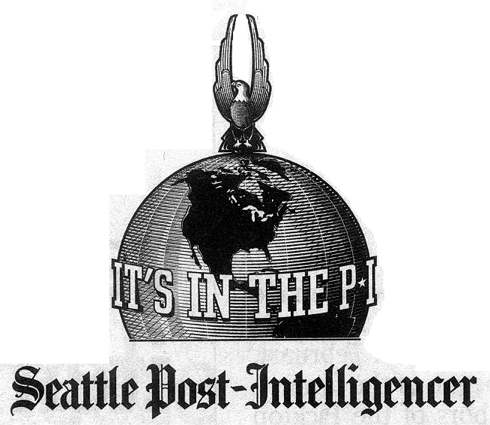A Brief History
InvestigateWest (IW) grew out of the March 2009 demise of the 146-year-old Seattle Post-Intelligencer (P-I ). [1] While the closure of the Hearst Corporation-owned P-I was part of a larger trend (newspapers shed 15,000 jobs in 2008), the P-I staff had been on a particularly rocky ride [2] Hearst’s decision came after a lengthy dispute with cross-town rival Seattle Times over the terms of a 1983 joint operating agreement , and effectively left the city with one daily paper.

P-I staff had seen the writing on the wall, and many found new jobs. While some 25 ex-P-I journalists chose to move to a general news site known as Post Globe , a core of 10 or so elected to create a new nonprofit enterprise focused on investigative, explanatory and narrative journalism. The group included Smith, Hibbard and McClure, as well as former P-I Managing Editor David McCumber, investigative journalists Lewis Kamb and Kristen Millares Young, and investigative reporter/computer assisted reporting specialist Daniel Lathrop. Meeting in early 2009 as True West , the group in March dropped the name—better suited, they concluded, to a pulp Western than a journalism venture. Their new choice: InvestigateWest.
Its founders initially conceived of IW as a news service covering the western United States and Canada. They saw an opportunity in watchdog (or accountability) reporting with a focus on the environment, public health and social justice. With its longer lead times, considerable expense and potential legal liability, the volume of investigative reporting was dwindling nationwide. While it was hard to get an accurate count, the nonprofit organization Investigative Reporters and Editors saw its membership drop from 5,391 in 2003 to 4,000 six years later. Pulitzer Prize submissions in the public service category declined 43 percent between 1985 and 2010; in the investigative category, by 21 percent.
Core team . Three people emerged early as IW leaders: McClure, Smith and Hibbard. All three had experience with science reporting, including medicine, the environment and health. They had also done investigative work, and had some management experience. They had wide networks of contacts both in journalism and in their fields of expertise. But all were print journalists, and none had ever run a business.